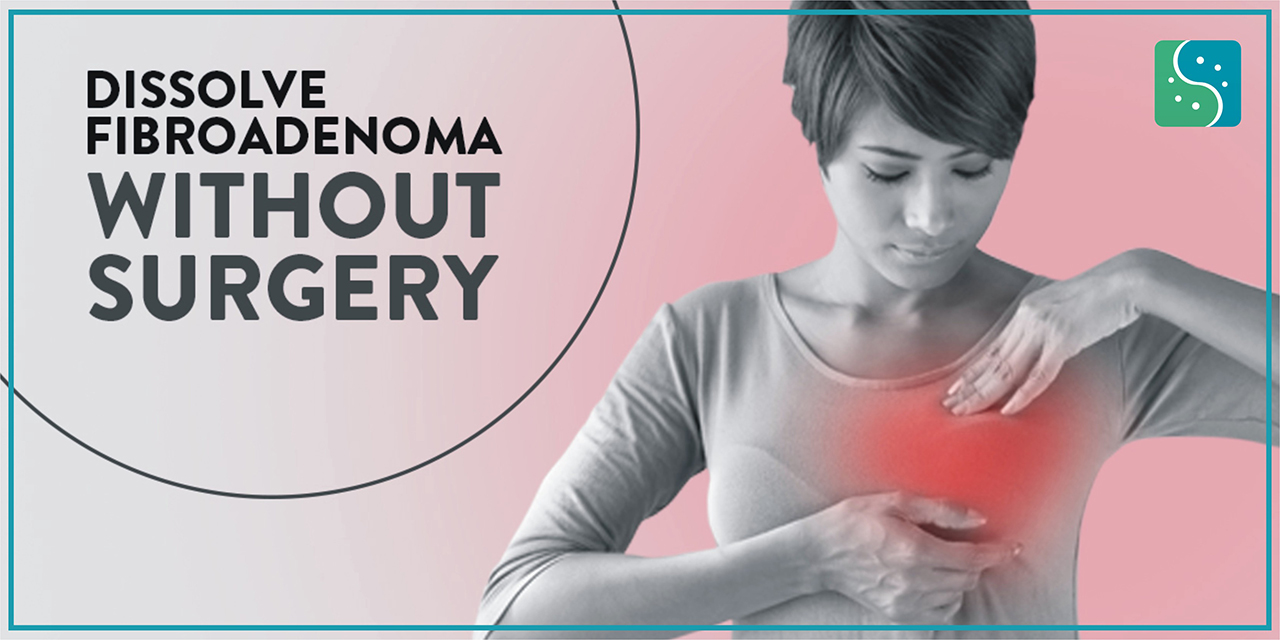A FIBROADENOMA is a solid breast lump. This breast lump is not cancer. A fibroadenoma happens most often between ages 15 and 35. But it can be found at any age in anyone who has periods.
There was a time when a lump or node in the breast was overlooked and ignored by most women. Thankfully, that sort of negligence is a thing of the past and women are more aware of pressing the alert button when they feel a lump or node in the breast. That lump or node could actually be fibroadenoma, which is a very common tumour of the female breast.
A fibroadenoma often causes no pain. It can feel firm, smooth and rubbery. It has a round shape. It might feel like a pea in the breast or it may feel flat like a coin. When touched, it moves easily within the breast tissue.
Fibroadenoma is a curable condition with the use of natural homoeopathic medicines. Homoeopathic treatment can prevent women from the surgical excision of the tumour from the breast. Surgery can remove the tumours in breast present at a particular time but the tendency to form tumours that are hidden in the body remains as such.

Homoeopathic treatment for fibroadenoma of breast comes with a double benefit. The first is that homoeopathic medicines dissolve the tumours in the breast and the second is, they help to reduce the body’s tendency to form such abnormal tumour growths by raising immunity. The entire dissipation of fibroadenoma of breast takes a few months with the use of homoeopathic medicines. The selection of homoeopathic medicines varies for every individual.
A fibroadenoma is a non-cancerous (benign) breast lump. This smooth, round, solid tumour consists of fibrous tissue and glandular tissue that form a mass. In very rare cases, a fibroadenoma may contain breast cancer.
SYMPTOMS OF FIBROADENOMAS A fibroadenoma can be:
You may notice it becoming tender in the few days just before the start of your period. Large fibroadenomas are more likely to cause pain than a small fibroadenoma.
Fibroadenomas tend to grow very slowly, but they don’t always get bigger and may even shrink. This is especially true if you’re in your teen years or have reached menopause. Conversely, a fibroadenoma may grow larger during pregnancy.
There is no specific cause that why some people get fibroadenomas. Some believe it has to do with being sensitive to estrogen. This is because fibroadenomas tend to grow during pregnancy or hormone therapy (when estrogen is higher), while they’re more likely to shrink after menopause (when estrogen is lower). Fibroadenomas grow in the lobule area of your breast tissue. Lobules are the glands in your breasts that make milk during lactation
Most fibroadenomas aren’t life-threatening or cancerous. But, they can get bigger, change in appearance or become painful. Like most breast diseases, the best way to prevent complications is to get regular breast exams or mammograms. While breast disease is often unavoidable, your risk for complications from these diseases decreases with early detection.
Contact your doctor if you notice a breast lump or breast changes. Some fibroadenomas are too small to notice. Some tests are performed to determine what type of lump you have
Yes, it’s possible to get more than one fibroadenoma. That’s why it’s important to become familiar with how your breasts typically feel. You should alert your doctor to any new lumps in your breasts.
Unfortunately, you can’t do anything to lower your risk of fibroadenomas. However, you can take these steps to reduce breast cancer risk.
It’s rare for fibroadenomas to turn into cancer. However, you should continue to check the tissue in your breast for new lumps or changes to existing lumps. Becoming aware of how your breasts feel is the best way to recognize changes that could be worrisome.
Finding a breast lump can be scary, but most lumps aren’t cancerous. Once you know what a benign fibroadenoma feels like, you can quickly notice any suspicious changes and identify new benign lumps. Most people with fibroadenomas don’t need treatment. Some lumps disappear on their own, but never assume a new lump is benign without getting it checked!